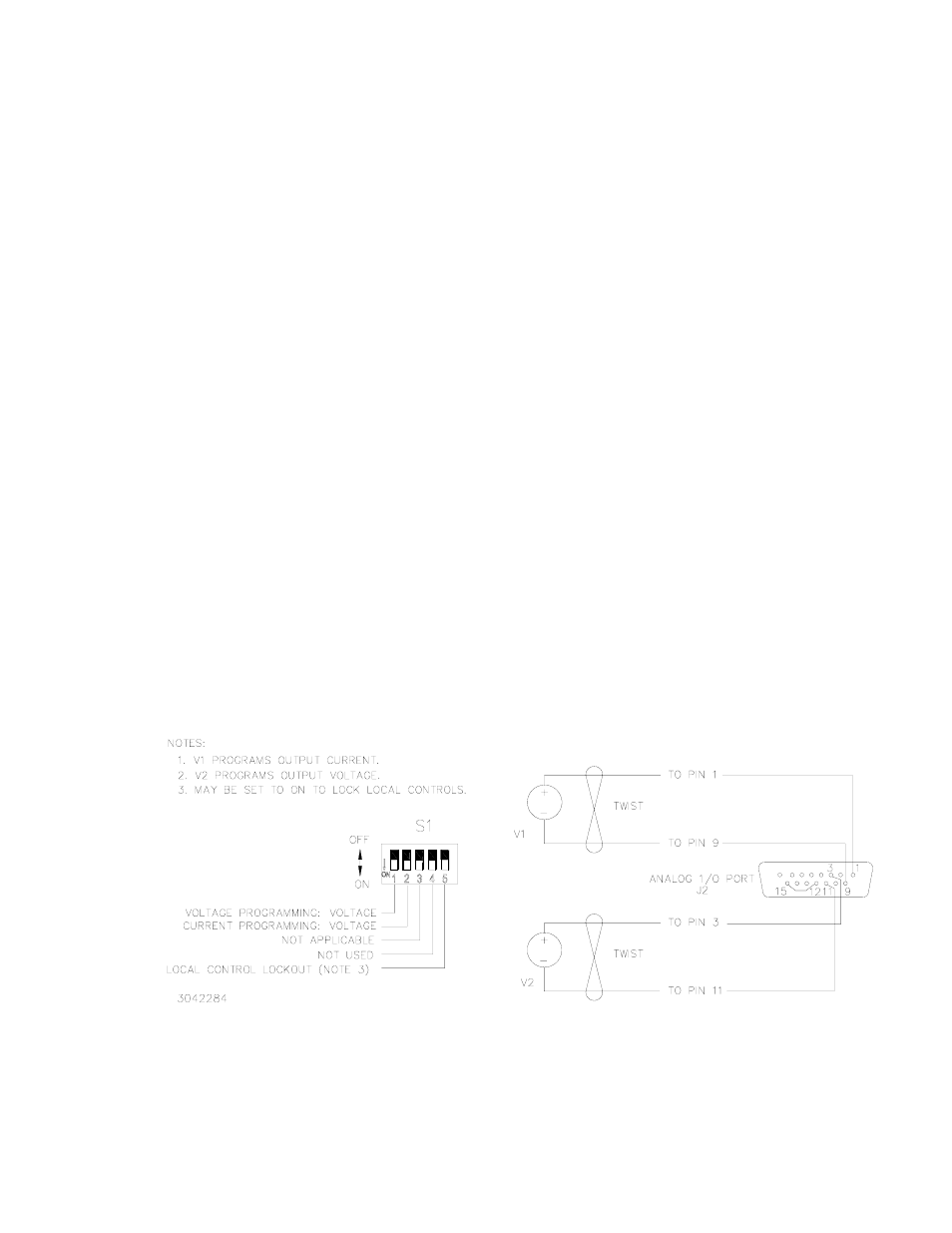2 programming with external voltage, Programming with external voltage -37, 2) o – KEPCO KLP Series User Manual, Rev 4 User Manual
Page 79: 2 for vo

KLP091313
3-37
3.4.2
PROGRAMMING WITH EXTERNAL VOLTAGE
Figure 3-15 is a simplified diagrams of the KLP showing the switch configuration and external
connections required for analog programming using an external voltage.
1. Virtual Model (PAR. 3.2.9) and Overvoltage and Overcurrent settings (PAR. 3.4.3) must be
established via either local programming or digital remote programming prior to initiating
Analog Remote programming.
2. Turn off power and configure the Analog I/O DIP switch (Figure 2-2) as follows:
SW1: OFF (Program output voltage via voltage)
SW2: OFF (Program output current via voltage)
SW3: either OFF or ON (disabled when in remote analog programming mode; see
Table 2-2)
SW4: Reserved - Do not use
SW5: Either OFF (Local controls enabled) or ON (Local controls locked)
3. Configure Analog I/O Port J2 (Figure 2-2) by referring to Table 2-7 and Figure 3-15 (ground-
ing J1 pin 12 enables analog programming).
4. Refer to PAR. 3.4.3 to change overvoltage or overcurrent setting in analog programming
mode.
With the power supply configured as shown in Figure 3-15 and assuming the load causes the
power supply to operate in voltage mode, varying source voltage V2 from 0 to maximum causes
the output voltage of the power supply to vary linearly from 0 to full scale, while V1 can be used
to adjust the current limit. When the power supply operates in current mode, V2 will adjust the
voltage limit and V1 will adjust output current.
Factory default full scale (F.S.) voltage programming is 10V. To set full scale voltage program-
ming to a lower value, see PAR. 3.2.17.4
FIGURE 3-15. ANALOG PROGRAMMING OF OUTPUT VOLTAGE OR CURRENT USING VOLTAGE
